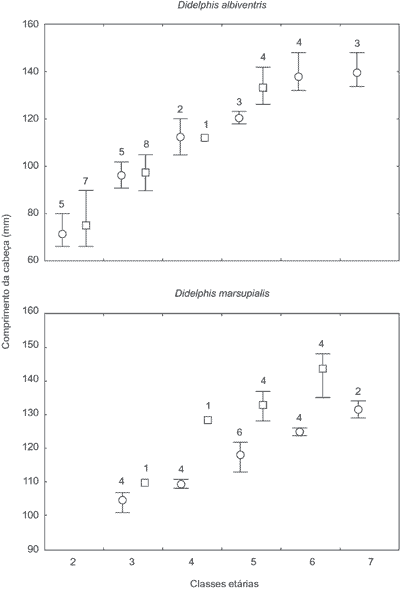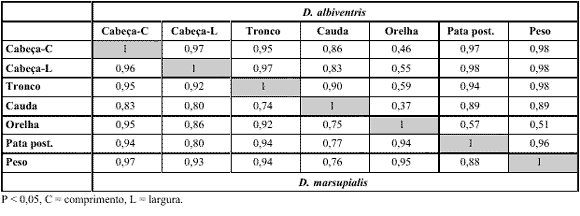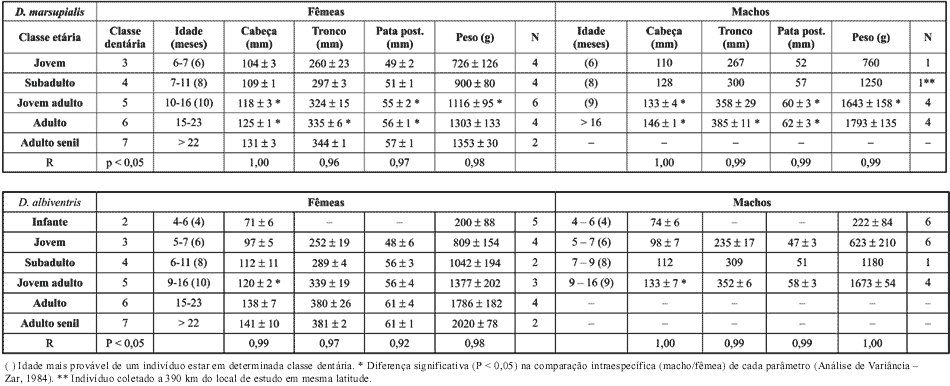Nowaday, data about marsupial biometry are poorly available in Brazil, considering the high richness of marsupial species in this country. Then, relationships of body size and sexual dimorfism of natural populations of the white-eared opossum, Didelphis albiventris, and of the common opossum, D. marsupialis, were studied in two mixed forests of Curitiba, southern Brazil, between February 1995 and February 1997. As a result, there was a strong relationship among the teeth emergence, weight and several body measures obtaIned from opossums. Hence, measures as the head length may be used to estimate other measures of the body. Sexual dimorfism was also verified in relation to the body size and the head shape for the common opossum. Adult females of the white-eared opossum proved to be bigger than adult females of the common opossum. Besides, some individuals of both species had an increase in their weight during the autumn probably to support the low food available’ season. However, the white-eared opossum usually storages more fat that the common opossum in any season. Therefore, the adaptative strategies of both species revealed different among themselves in southern Brazil and probably are results of different life histories, despite their related kinship.
opossums; biometry; growth; sexual dimorfism; fat index





